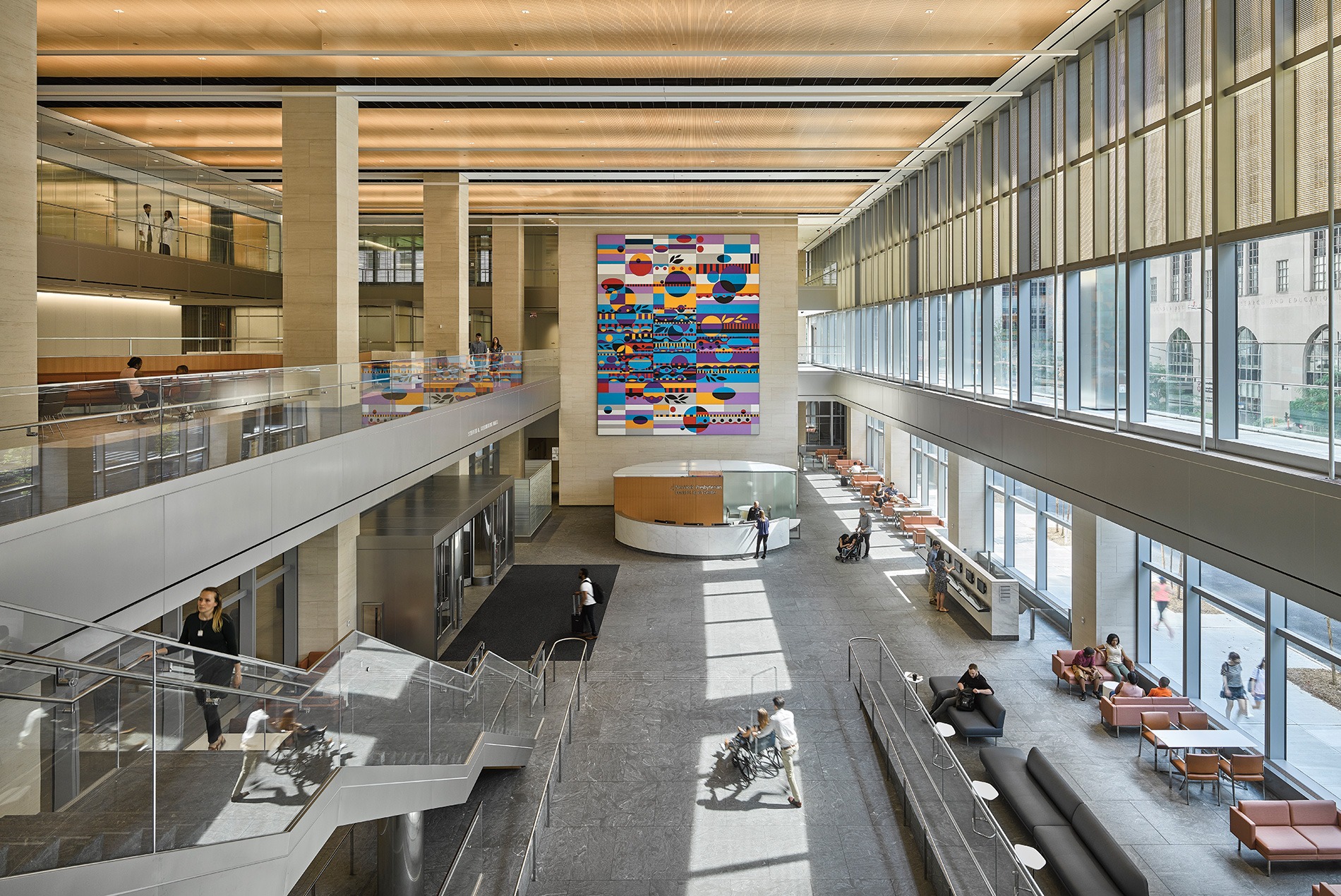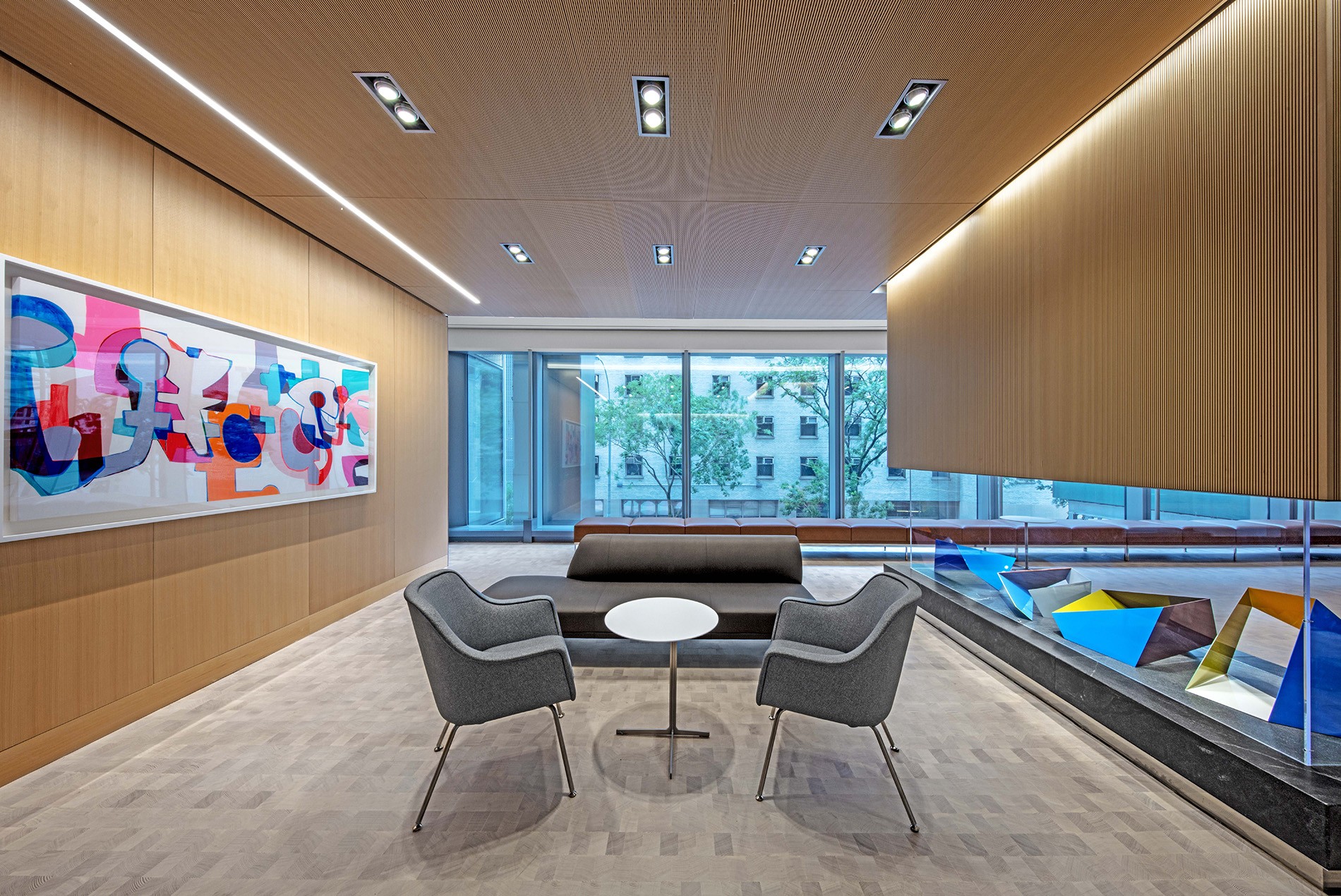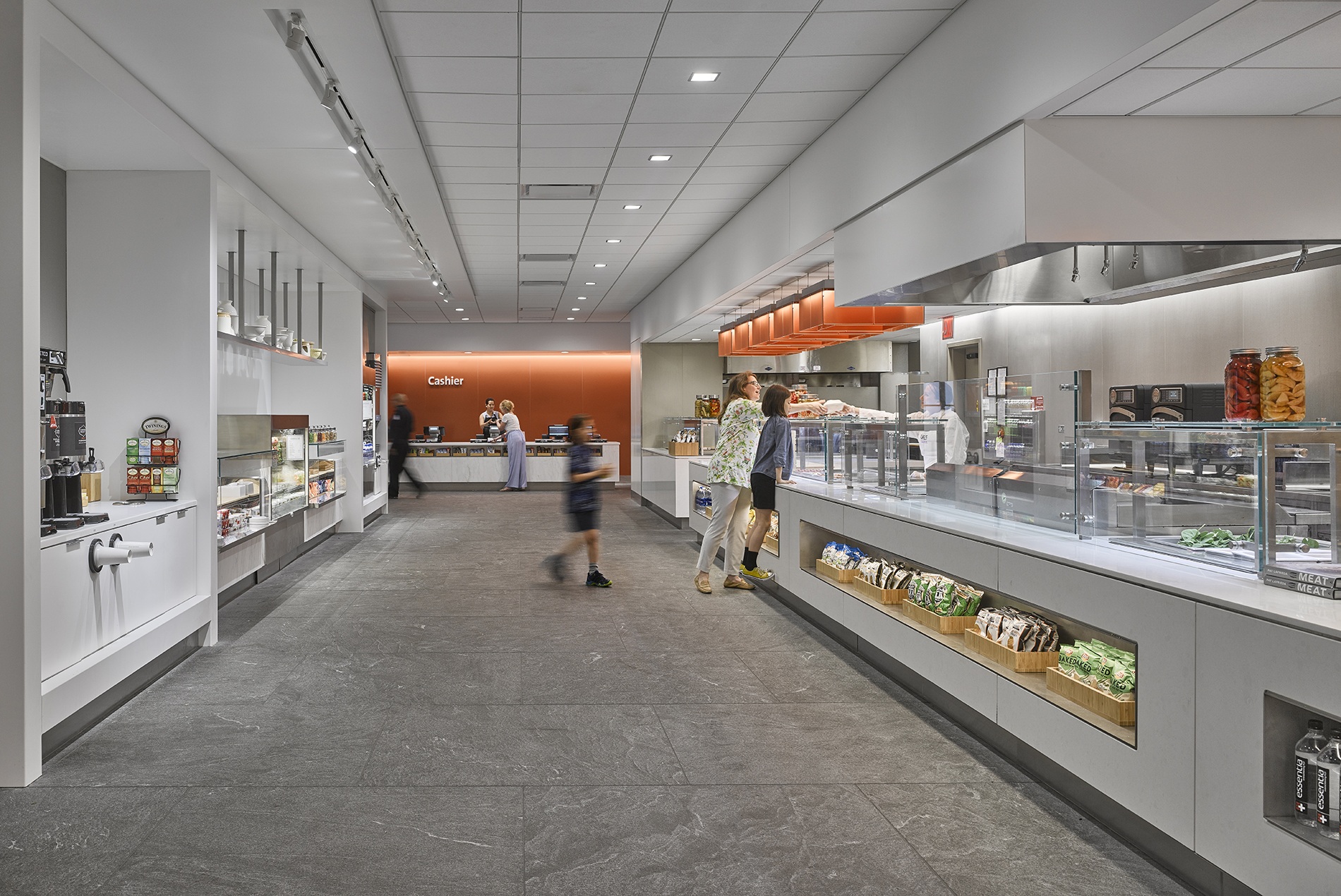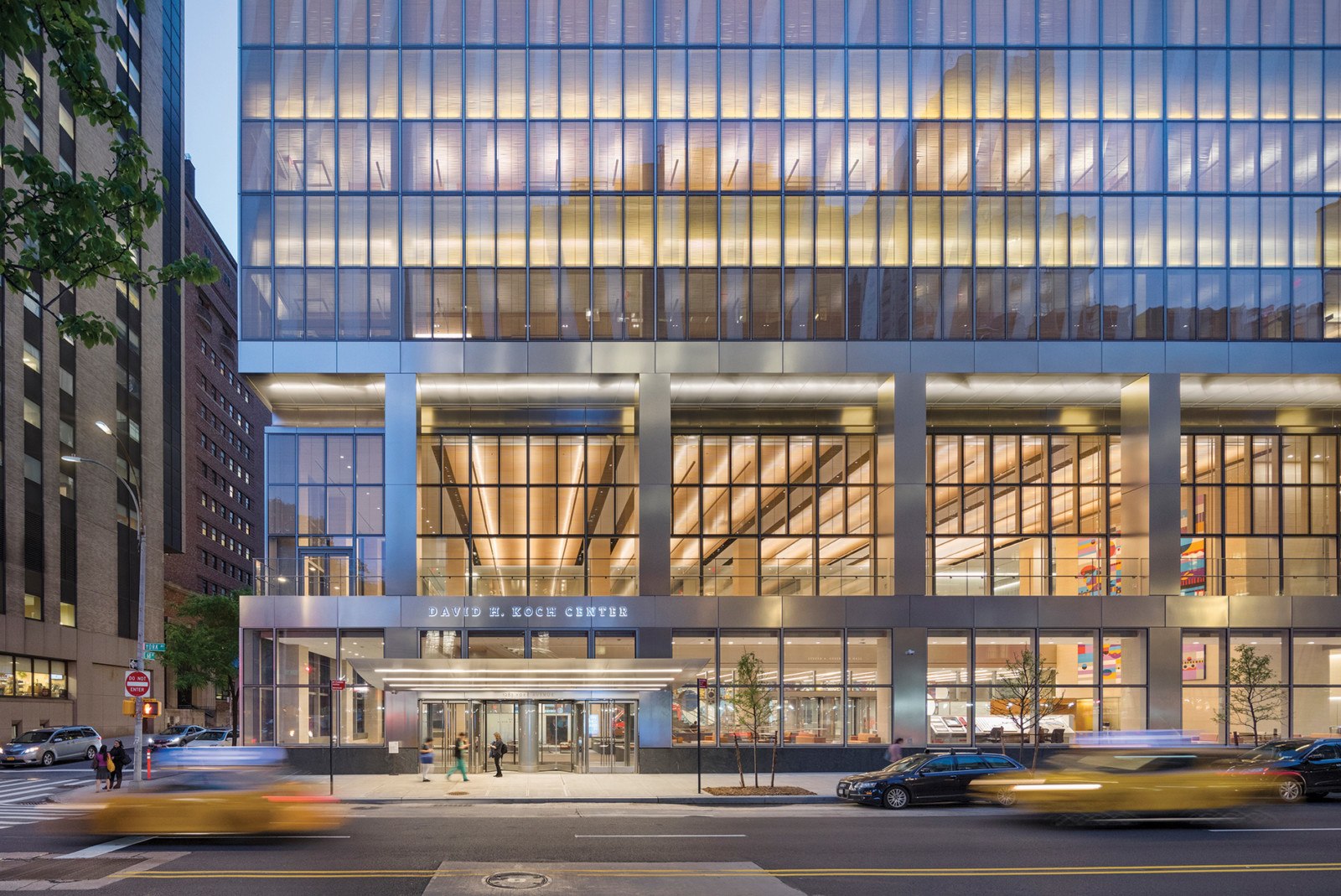Designed through a collaboration of HOK, Ballinger and Pei Cobb Freed, the NewYork-Presbyterian David H. Koch Center won an Award of Merit from Healthcare Design Magazine.
Excerpted from Healthcare Design Magazine:
The design of the NewYork-Presbyterian David H. Koch Center was guided by a mission to improve the patient, family, and staff experience through every touch point of the care journey. Completed in April 2018, the building on Manhattan’s Upper East Side delivers on that and more. Showcase jurors lauded numerous thoughtful details incorporated throughout the 734,000-square-foot ambulatory building that provides treatment of digestive diseases, cancer, and other conditions.
One outstanding example of that effort is found in the approach to procedural care, with flow maps of the patient and care team experience developed to help improve efficiency. A notable feature of the resulting design is 100 percent private prep/recovery rooms, where patients can change, store belongings, prepare for surgery, and return for recovery. Also celebrated were solutions such as a private vehicular drop-off area adjacent to the main lobby that allows patients a more quiet, calm arrival experience; clinical floors organized with perimeter circulation for clear public wayfinding; and a fully integrated and diverse art program.

But beyond experience, the project impressed with its approach to operations/efficiency, future flexibility, as well as sustainability and resiliency. Designed for a minimum of LEED Silver certification, the building uses numerous sustainable strategies; but when Hurricane Sandy hit New York during design, resiliency features were then added to ensure the building could be responsive to community needs during a severe weather event. The project also boasts 18-foot-6-inch floor-to-floor heights, removable façade panels on clinical floors, and a long-span structural system to reduce columns—all to ensure the facility was built to adapt to countless future needs.
The project was submitted to the Design Showcase by Ballinger, HOK, and Pei Cobb Freed & Partners. Lead designers Erin Nunes Cooper, associate principal at Ballinger; Christine Vandover, senior interior designer at HOK; and Henry Cobb, founding partner of Pei Cobb Freed & Partners, share their thoughts on how some of the jury’s favorite elements were achieved.

How did [the design] process differ from a more traditional approach?
Christine Vandover: It was a complex project, with three different design firms and an array of consultants working collaboratively to deliver a project with a unified design intent. It was critical to the project’s success for us to bring all consultants on board from the earliest stages. Even an art consultant and graphic design consultant were brought on in the beginning, which was important to creating a cohesive, well-branded space.
Another unique element was the team’s approach to facility tours. Instead of visiting existing healthcare spaces, we challenged ourselves and the client to learn about the customer experience from those outside the healthcare industry. We went to a diverse set of projects, had scorecards that our clients used to give feedback, and we really considered the experience from start to finish—from hospitality to food service. This process gave us freedom to think outside the box and integrate spaces and amenities that we might not otherwise have considered.
As the project progressed, we wove architecture, medical planning, and interiors together through regular and constant communication. We wanted to function as one firm to create a singularly unique space. From regular in-person meetings to weekly charrettes, this collaborative spirit was key to making the project a success.

What’s your favorite design element and why?
Christine Vandover: My favorite part of the design is the casual dining on the 2nd floor. It was designed to create community and to emphasize the connections between food and health and wellness. NewYork-Presbyterian saw the impact that a good dining experience can have on an organization and people and committed to bringing in a food service operator who had a fresh perspective on what they served. For example, bone broth is available at the coffee bar. How cool is that?
From a design perspective, it’s a generous, light-filled open space that gives visitors diverse choices of places to dine, socialize, and work. It feels warm and inviting. There’s strategically a quiet family lounge on this floor, adjacent to the coffee bar. It’s a unique space for healthcare, but one with a great impact. It’s enclosed with glass for acoustic purposes and has end block wood floors and ceilings that overlook the treetops on 69th Street. It’s a calming and healing space that gives families a quiet environment to contemplate their health or that of a loved one.
